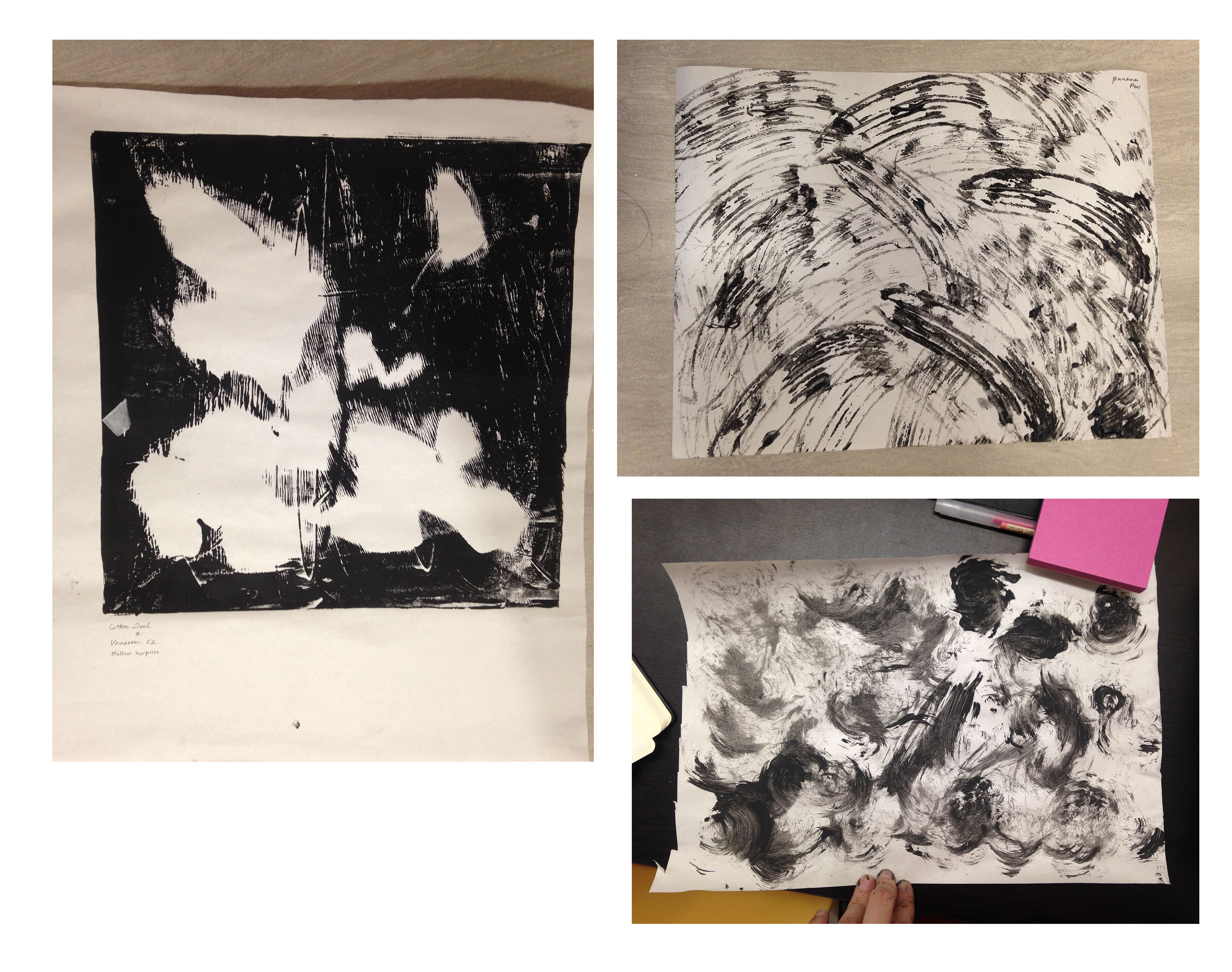Brainstorming
Research and Reference

After conducting research on recognised artists in the mark-making field, I found the works of Andy Warhol and the impact it made especially enlightening, particularly his 1960 works that portray everyday objects. Upon learning more about the impact he made on the art world through utilising an array of out-of-the-ordinary mediums and techniques (most prevalent in his Oxidation series), as well as giving life and character to regular, everyday objects (through the abstract enhancement of their qualities), I hope to integrate some of the qualities he displayed through his works in my experimental techniques, as well as conceptualising.
Furthermore, in Warhol’s Shadows series, I found the methods in which he used to create different hues and spots of light innovative. In my experimentation process, I hope to emulate this by adopting different techniques and tools to create hues, textures, and lighting.
Please refer to the following link for a more in-depth analysis of Andy Warhol’s works: https://oss.adm.ntu.edu.sg/vwong005/mark-making-building-blocks-in-art/
Concept
Initially wanting to have a concept that surrounds emotions I face at my workplace (a place in which I spent most of my time before enrolling into ADM), I found using object association as a conceptual basis a more effective approach as it is a more general concept providing much more room to experimenting and using different tools and techniques. Therefore, in my final concept, I aim to represent emotions on an abstract and non-representative level with a theme of composing them in such a way that it uses a variety of visual elements to symbolise an object or sensation that is commonly associated with the emotion in question.
Experimental Process
Mark-Making Techniques
To aid in creating our lines, we were introduced to a couple of mark-making methods – constructing our own mark-making tool and mono printing.


Creating our own tools involved coming up with innovative methods to apply ink onto a canvas; for example, we could come up with a new tool that when used to apply marks onto a canvas, forms certain patterns or strokes that traditional tools (e.g. paintbrushes or pencils) are not able to achieve, or methods of application that involve splattering paint or pouring paint over a canvas. Mono printing, on the other hand, can be carried out by using a machine to flatten materials over a canvas, forming a shape or pattern using ink. In addition to these two methods, I also explored using a range of mediums to form different textures and layers of depth in the hopes of conveying the emotions more effectively.
Breaking Down Emotions
I. Love

| Emotion Subset | Objects Associated | Visual Elements Associated |
| Tenderness
Fondness Affection Sentimentality |
‘Butterflies in stomach’ feeling
Flowers Hearts (literal and metaphorical) Journeys, long periods of time Blushing, palpitations
|
Wavy strokes
Soft textures Hazy backgrounds Faded, watery strokes Paint splatters, spots |

Bottom: Water filter, hot glue gun, cotton bud dipped in white paint
Right: Leaves
II. Joy


| Emotion Subset | Objects Associated | Visual Elements Associated |
| Ecstasy
Euphoria |
Drugs
Heavy patterns Sense of flying; freedom Waves Blurred visions |
Radial movements
Circular strokes |
| Thrill
Exhilaration |
Explosions of energy
Masses of energy Fast movements |
Fast, spontaneous gestures
Sharp strokes Splatters in upward directions |

Top (Right): Tube of spray bottle
Bottom (Left): Toothbrush
Bottom (Right): Oil and paint
III. Surprise

| Emotion Subset | Objects Associated | Visual Elements Associated |
| Surprise | Widened eyes and mouth
Hidden elements Explosive mannerisms Unexpectedness Build up of suspense |
Circular motions
Gradients Isolated strokes |

Right (Top): Banana peel
Right (Bottom): Wire brush
IV. Anger

| Emotion Subset | Objects Associated | Visual Elements Associated |
| Irritation
Aggravation |
Pet peeves
Scratching, Lack of uniformity |
Irregular strokes
Mixture of organic and geometric shapes Spontaneous gestures Focus on harsh and textured strokes |
| Rage
Fury Ferocity |
Rapid movement
Shouting Veins popping out Violence – stabbing, tearing Cracks |
Irregular strokes
Spontaneous gestures Sharp, geometric shapes and strokes Harsh textures ‘Windshield-wiper’ movements No sense of direction |

Top (Right): Crushed paper with white thread
Middle (Right): Finger prints, meant to replicate motions of pet peeves (e.g. tapping sounds, sharp scratching noises)
Bottom (Left and Right): End of paintbrush


V. Sadness

| Emotion Subset | Objects Associated | Visual Elements Associated |
| Depression
Grief
Melancholy |
Pills, medication
Unmade beds, untidiness Tears Feeling of stillness, calm Bodies of water Single rays of light Spilled milk Hidden feelings; bottling up Sighing |
Soft textures
Paint splatters Irregular movement Waves, organic shapes Gradients Haziness |

Right (Top): Tissue paper dipped in black paint
Right (Bottom): Torn up leaf

Right: Party popper streamers

Right: White paint on black paper (meant to convey idea of a still lake, refer to reference picture in mood board)
VI. Fear

| Emotion Subset | Objects Associated | Visual Elements Associated |
| Horror | Mystery, hidden elements
Veils Tree branches Demons, supernatural entities |
Gradients
Sharp, heavy strokes Geometric shapes Darker strokes Haziness |
| Nervousness
Tenseness |
Tension; tightened grips
Breakage Palpitations Nerve signals Scratches, fidgeting |
Gradients
Sharp, irregular strokes Messiness; mixture of strokes and shapes |

Top (Right): Powedr on black paint
Bottom (Left): Handprints
Bottom (Right): Black droplets created by shaking paper

Top (Middle): Black and white paint
Top (Right): Static floor wipes
Bottom (Left): Spray bottle
Bottom (Middle): Black paint on newspaper article about Hurricane Harvey
Bottom (Right): Shoe prints


Takeaways
Throughout this process, I was able to adopt different methods of mark-making to create visual elements that I can use in my final product. Experimenting allowed me to venture out of my comfort zone and through the use of various mediums, create prints that focus on conveying emotions as opposed to literally depicting them.
For the final product, please refer to: https://oss.adm.ntu.edu.sg/vwong005/project-1-my-line-is-emo
For research on mark-making artists, please refer to: https://oss.adm.ntu.edu.sg/vwong005/mark-making-building-blocks-in-art/

